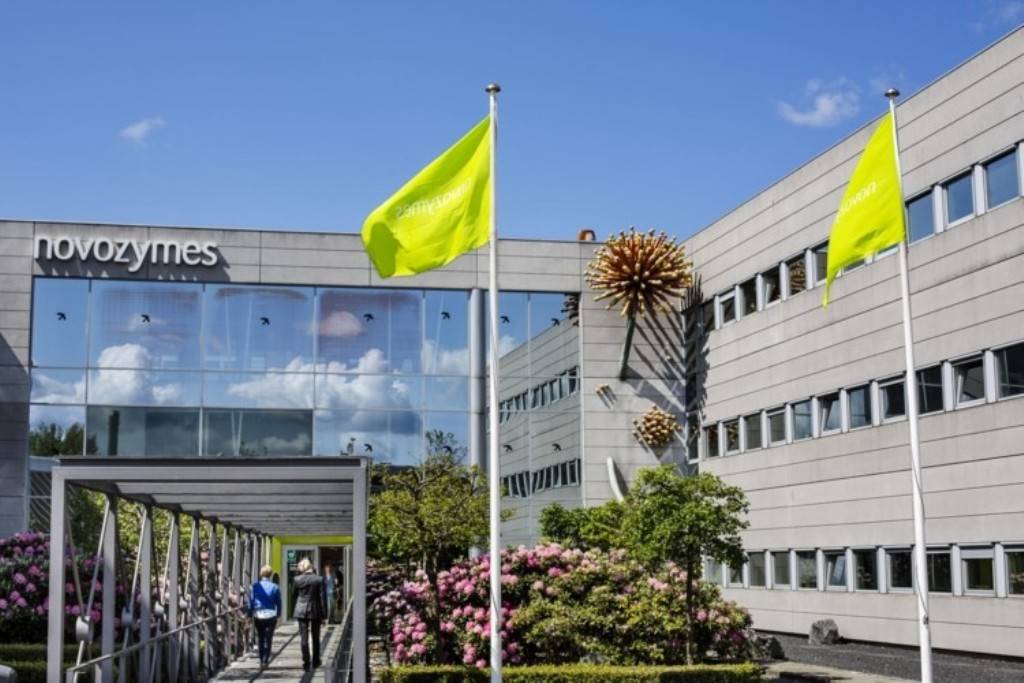
Novozymes’ biosolutions to be considered as part of Amager Resource Center’s (ARC) carbon capture project. Novozymes biosolutions to be tested as part of ARC’s official application to the European Union’s Innovation Fund to build a carbon capture facility at ARC’s waste-to-energy plant in Copenhagen, Denmark.
Novozymes, the world leader in biological solutions, is included as part of ARC´s EU application to set up a carbon capture facility at the Amager Resource Center (ARC) in Copenhagen. Novozymes’ biosolution for enzymatic carbon capture is to be tested as a possible solution for the future carbon capture plant. The captured carbon dioxide (CO2) by project ClimAid Copenhagen will either be utilized or stored. Following a successful application, ARC is set to be operational by 2025.
“We are seeking to demonstrate the feasibility of enzymatic carbon capture technology. This aligns well with Novozymes’ commitments to innovation and climate action. In 2020, Novozymes enabled savings of 49 million tons of CO2 in global transport, and we hope that carbon capture technology can significantly accelerate the path to achieving global climate goals, together with our customers and partners,” says Amy Byrick, Executive Vice President of Strategy & Business Transformation at Novozymes.
A greener green technology
Currently, the majority of solutions for carbon capture are amine-based systems, which require significant amounts of chemicals to be effective, or are high temperature carbonate processes.
The difference to conventional systems is that the enzymatic solution uses non-toxic & non-corrosive solvents at a lower stripping temperature. This lower temperature enables the use of low value heat and use of hot water instead of hot steam, which saves energy costs.
As there is no toxic waste generated with the enzyme process, there are no extra costs for wastewater treatment - the wastewater from the process can go directly to ordinary municipal wastewater treatment.
Collaborating to deliver on climate pledges
The EU is aiming to cut GHG emissions by 55% by 2030 and 100% by 2050. This will not be possible without large-scale deployment of carbon capture and the ARC project is an important steppingstone on the way.
Novozymes will, together with Saipem and Babcock & Wilcox, provide a separate tender to ARC in the second half of 2022, in line with industry project infrastructure development practices, to provide the enzymatic carbon capture solution for ARC.
“It is crucial that the private sector invests in the green transition. ARC is pleased that Novozymes has announced its dedication to maturing carbon capture by developing enzyme-accelerated methods to capture CO2,” says Jacob H. Simonsen, Chief Executive Officer at Amager Resource Center. “Developing enzyme-accelerated alternatives to traditional methods of carbon capture will help to build knowledge and can potentially make the process more effective and sustainable, resulting in reduced cost for the green transformation. It is both in the interest of ARC, Denmark and the global climate.”
About Carbon Capture:
Carbon capture and storage (CCS) involves avoiding the release of CO2 emissions into the atmosphere from industrial processes, such as steel and cement production, or from the burning of fuels in power generation. This carbon is then transported from where it was produced, via ship or in a pipeline, and stored deep underground in geological formations. Amine-based technology has been under development since the 1980s and has been proven to be both safe and effective in the US and around the world.
About Novozymes:
Novozymes is the world leader in biological solutions. Together with customers, partners and the global community, Novozymes improves industrial performance while preserving the planet's resources and helping build better lives. As the world's largest provider of enzyme and microbial technologies, our bio-innovation enables higher agricultural yields, low-temperature washing, energy-efficient production, renewable fuel and many other benefits that we rely on today and in the future.
Source: Novazymes
















